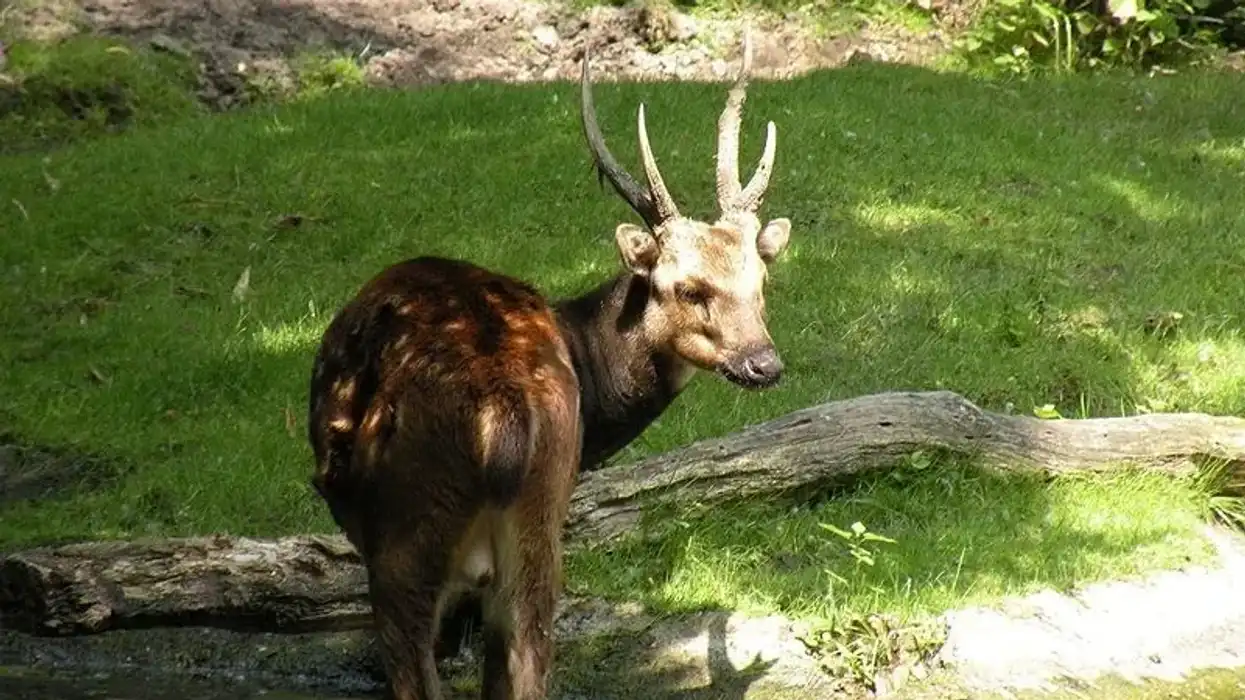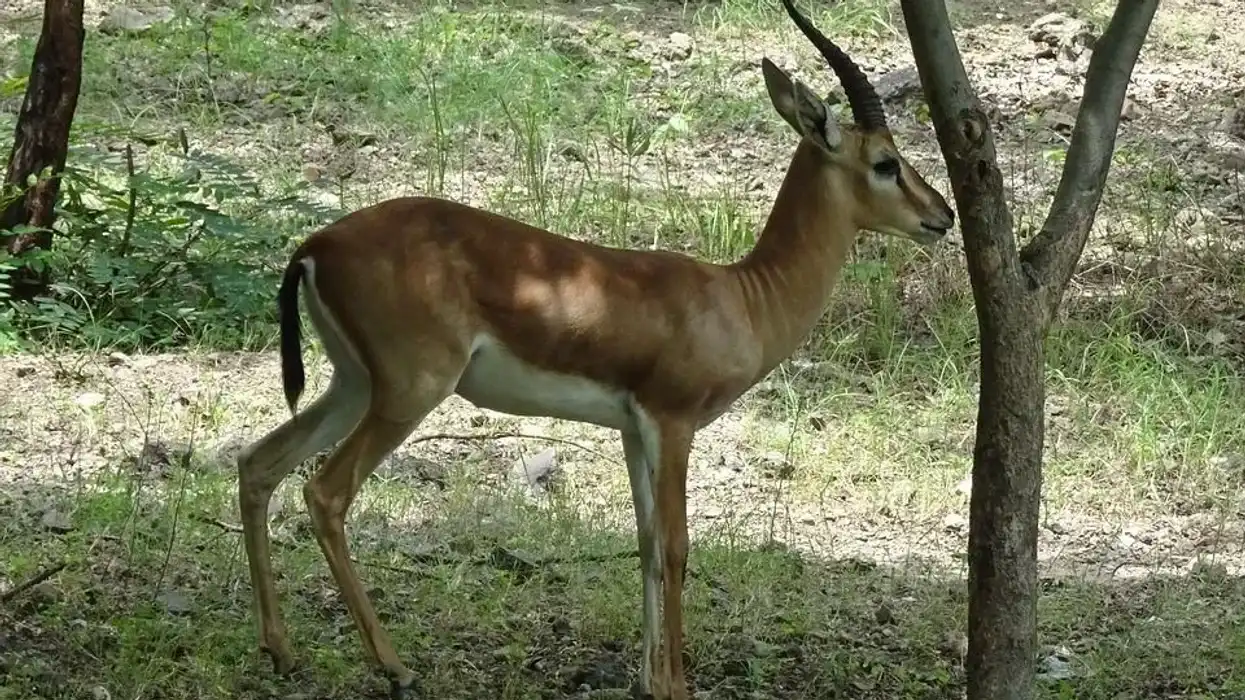Do you know what the Visayan spotted deer is? If not, don't worry - you're about to learn some cool facts about this beautiful animal.
The scientific name of the Visayan spotted deer is Rusa alfredi. The Visayan spotted deer is a species of deer found in the Philippines and is endemic to the Visayan Islands. They are considered to be Endangered species, with a population of around 2500 left in the wild.
In this blog, we will discuss everything you need to know about the Visayan spotted deer, including their physical characteristics, behavior, and diet. We will also talk about how you can help protect these animals from extinction.
Visayan Spotted Deer Interesting Facts
What type of animal is a Visayan spotted deer?
Visayan spotted deers (Rusa alfredi) or Philippine spotted deers are species of deer in the Visayan Islands. The behavior of this deer species has not yet been thoroughly studied.
As nocturnal species, they emerge at dusk to feed in their habitat. They were only described as a separate species in 1983 and are one of the three endemic deers of the Visayan Islands. These social animals are only found in small groups.
What class of animal does a Visayan spotted deer belong to?
Philippine spotted deer (Visayan spotted deer) belongs to the class of Mammalia of animals and phylum Chordata.
How many Visayan spotted deers are there in the world?
The population of Philippine spotted deers (Visayan spotted deers) is 700 mature adults in the wild as per the IUCN Red List of Threatened Species.
Where does a Visayan spotted deer live?
The habitat range of Philippine spotted deer (Visayan spotted deer) is in the Visayan region in the Philippines. The distribution of deer is an island endemic to the Visayan Islands.
This species is the most narrowly distributed and least known in the world. Previously this group was found across the Visayan region of Samar, Leyte, Guimaras, Cebu, Negros, and Panay islands. However, currently, it is now believed to be found in three or four of the remaining regions of forest on Negros and Panay islands.
What is a Visayan spotted deer's habitat?
The natural Visayan spotted deer habitat range includes the dense forest interior of the islands. At one period, a huge number of these animals were found from the top of mountains to the sea level across the islands.
The rugged tropical forest ranges between 2460-3280 ft (750-1,000 m) in altitude. These animal species prefer regions that underwent a natural disturbance, like landslides or fires. They prefer areas that have dense vegetation, such as grass land and shrub land.
Who do Visayan spotted deers live with?
Visayan spotted deer (Rusa alfredi) lives in small groups with less than eight individuals.
How long does a Visayan spotted deer live?
The exact life expectancy of Visayan spotted deers is not known. However, the maximum life span of related deer species is 12-17 years.
How do they reproduce?
The mating structure of these species is not exactly known. The most common mating structure in related species of deer is polygyny. Males fight each other to approach the estrous female. The fight during the breeding season usually involves vocalization and sparring.
Males that are larger and older usually win by driving any young male away. These males then mate with females. Visayan spotted deers likely have a similar breeding system.
The breeding season is known as rut and takes place between November and December. After the breeding season, the gestation period is 240 days, and births are around May and June. Females will generally only produce young ones every other year so she has time to recover from nursing her previous litter while raising this one too.
There is no information about parental care from males or females. In 1990, a captive breeding program began as conservation efforts between the Philippine Department of Environmental and Natural Resources and France's Mulhouse Zoo. Due to this program, three local breeding centers have started and with many zoos around the world.
What is their conservation status?
The conservation status of Visayan spotted deer is listed as Endangered by the IUCN Red List of Threatened Species. There are only a few of these deer species remaining in the wild.
It is also one of the most threatened mammals around the world. If the rate of hunting and destruction of land accelerated further, then these species will go extinct. Until the courtside provides so this species survives fairly, the captive breeding program will not release them.
Also, guard patrols are hard due to the remoteness of the forest land they live in, increasing the pressure on the remaining population. From January to June, around the dry season, hunting pressure also increases.
These animals are also susceptible to diseases like tuberculosis and encephalitis, which can be spread from other animals (like domesticated cattle) that share their habitats.
Visayan Spotted Deer Fun Facts
What do Visayan spotted deers look like?
The upper body of this deer is soft dark or deep brown with a dense, fine coat. There are spots on the flanks and backs of their body, that stay throughout their life.
They have pale white fur on the lower lip, chin, and underparts. They have black noses and hooves, as well as a long tail that is bushy at the end. Their antlers are large for such small animals.
How cute are they?
These deer species are usually considered cute.
How do they communicate?
Males roar during the breeding season between November and December. Females and males communicated using chemical release.
How big is a Visayan spotted deer?
The length range of this deer is 49-51 in (125-130 cm), head to tail. The shoulder height range is 28-31 in (70-80 cm).
How fast can a Visayan spotted deer run?
Deer can run quite quickly - up to 35 mph (56.3 kph). This helps them evade predators or get away from danger as quickly as possible. They also have great agility and can jump high fences or other obstacles in their path.
How much does a Visayan spotted deer weigh?
The weight of this deer is 55-176 lb (25-80 kg).
What are the male and female names of the species?
The Visayan spotted deer full-grown male is known as 'stag' and the Visayan spotted deer female is called 'hind'.
What would you call a baby Visayan Spotted Deer?
A young Visayan spotted deer is called a 'fawn'.
What do they eat?
Visayan spotted deer are herbivores, meaning that they only eat plants. They eat different types of grasses. They mostly consume leaves, twigs, and fruits from trees and shrubs. During the dry season, they may also graze on grasses.
Are they dangerous?
No, they are not considered dangerous.
Would they make a good pet?
No, they would not make a great pet, as they do very well in their natural habitats around the world.
Did You Know...
Habitat restoration projects are carried out such as planting trees and shrubs throughout deforested areas so more food will be available for all species living nearby have started.
Several different animals prey on Visayan spotted deer. Some of these predators include tigers, leopards, pythons, and crocodiles. These animals mainly hunt the deer at night when they're most vulnerable.
During the day, the deer stay hidden in dense vegetation which makes it harder for predators to spot them. This also helps them avoid being seen and hunted by humans.
Visayan Spotted Deer do not migrate. They stay in the same general area their entire lives, although they may move around a bit within that area depending on what's available to eat. This helps them avoid traveling long distances and expending too much energy.
Visayan Spotted Deer often form close relationships with other animals living near them. Some of their friends include pigs, dogs, monkeys, and birds. They even have been known to share food with these animals.
Is the Visayan Spotted Deer endangered?
Yes, the conservation status of Visayan spotted deer is Endangered.
How did the Visayan Spotted Deer get its name and what other names does it have?
Visayan spotted deer got its name after the Visayan region of the Panay Islands it occupies. It is also called 'Prince Alfred's deer', 'Philippine spotted deer', and ' Visayan deer'.









